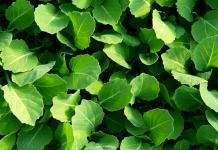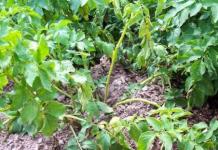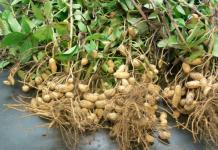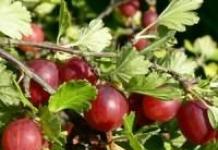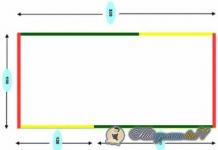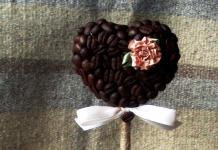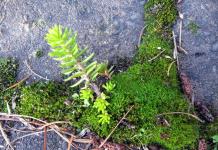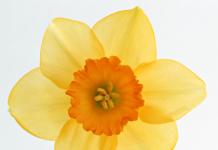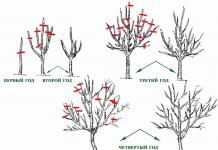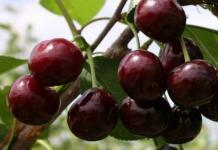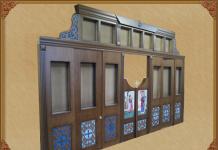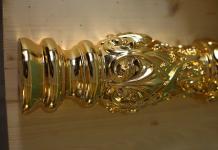A properly formed crown of berry or fruit crops allows you to obtain abundant and high-quality yields. As a rule, quince pruning is carried out in early spring. Quince can have a wide variety of crown types.
In gardening, plants with a pyramidal, round or wide, spreading crown are cultivated. Japanese quince and bush varieties are most often grown in summer cottages. Depending on the type, crown formation can be carried out in different ways.
How and when to prune
Experts recommend pruning in the first three or four years after planting in a permanent place. As a rule, five-year-old quince trees no longer require such a procedure and have a fully formed crown. Further pruning involves the removal of branches that cause thickening of the crown; in addition, all low-lying and basal shoots must be removed.

Quince pruning should be done exclusively in early spring using a sharp and clean tool. Proper pruning and crown formation require obtaining a plant with a well-lit and easy-to-maintain crown. Formation is based on the uniform arrangement of all the main skeletal branches of the tree throughout the entire trunk. Thus, after three or four years it is possible to obtain the most homogeneous skeleton of a fruit plant with the presence of ten powerful lateral branches.
Formative pruning must be done in the last ten days of March or early April, before sap flows in the plant. Preventive pruning of quince in the autumn period is required to remove dry, disease-damaged and non-fruiting branches from garden plants. Diseased areas need to be cut off until healthy wood appears. In the southern regions of our country, formative pruning has no fundamental differences. There is no universal scheme for pruning quince, so the formation should be based on obtaining the most productive and strong crown.
How to trim a quince (video)
Features of technology for different types
A feature of fruiting of young plants is the formation of a crop on long annual branches. In this case, the formation of flower buds occurs in the axils of the foliage. In adult plants, crop formation occurs on branches of different lengths. In subsequent years, generative wood is formed, which requires maintaining annual growth at a level of 20–40 cm.
A feature of vigorous varieties with a weak type of branching is the rapid transfer of fruiting to the peripheral part of the crown, as a result of which skeletal branches can become bare and sag. The quince crown is most often formed of a sparsely tiered or vase-shaped type. The last option is most convenient when growing medium-sized and vigorous varieties.

The trunk and skeletal-type branches in winter can be significantly affected by sunburn, which suggests the formation of a bush-like crown on productive plants. It is preferable to form vigorously growing quince varieties according to the type of sparse-tiered crown with the establishment of five or six skeletal branches. Thus, the lower tier is represented by two branches. On the second tier, skeletal branches should also be left at a distance of 0.7 m. The central conductor is cut out after two years of fruiting.
The formation of two branches above the tier should be done sparsely, with a distance of 30–35 cm. The central conductor on medium-growing and low-growing varieties can deviate under the weight of the crop, so it does not have to be removed during the pruning process. If after autumn pruning all cuts must be treated with paint using natural drying oil, then in the spring you can use a regular garden varnish.
A properly formed crown requires the presence of six or seven initial branches. A two-year plant should be pruned from the lower first skeletal branch, which should be shortened to 0.5–0.6 m. The remaining skeletal branches are pruned at the same level, and the central conductor should be approximately 20–25 cm higher than the main skeletal branches branches.

Care after pruning
Quince belongs to the category of fairly moisture-loving garden crops, the watering of which determines the yield indicators and the duration of the productive age. The first abundant water-recharging watering should be done in early spring, immediately after sanitary or formative pruning. The next watering is important at the stage of natural falling of a certain number of ovaries. It is mandatory to water the plants abundantly at the stage of active growth and fruit filling.
In the period after spring pruning, plants need feeding with mineral and organic fertilizers. It is recommended to supplement fertilizing with watering. It is very important to keep the tree trunks clean and regularly remove weeds. After watering and rain, it is very important to shallowly loosen the soil. A positive result was also noted when mulching tree trunk circles.

Garden quince is not widespread enough in our country, but gardeners recommend paying attention to this crop, since the plant belongs to the category of unpretentious and easily adaptable even to rather difficult cultivation conditions. Quince has a well-defined regenerative ability, which allows it to be grown in the northern regions.
As a rule, even after being damaged in severe and extremely frosty winters, gardeners manage to almost completely restore part of the fruit plantings or their entire above-ground system due to the presence of numerous shoots emerging from dormant buds.
Quince: cultivation and care (video)
Mandatory conditions for obtaining abundant and annual fruiting of quince include the mandatory use of spring pruning, which consists of shortening annual shoots and proper thinning of the crown, aimed at obtaining optimal lighting conditions inside the crown. Removing competing branches and shoots growing deep into the crown can significantly increase the productivity of the plant and improve its appearance.
Japanese Chaenomeles (lat. Chaenomeles japonica), or japonica– a species of flowering dicotyledonous plants of the genus Chaenomeles of the Rosaceae family. The species is native to Japan, although the plant is also widely grown in China and Europe. The generic name is literally translated from Greek as “split an apple.”
Planting and caring for chaenomeles
- Bloom: abundant, in May-June for three weeks.
- Landing: in spring, before the start of sap flow, and in autumn, during leaf fall.
- Lighting: bright sunlight.
- The soil: rich in humus, light - sandy loam, loamy or sod-podzolic, slightly acidic reaction - pH 6.5.
- Watering: after planting - frequent and abundant, especially during dry seasons. In the future, regular but moderate.
- Feeding: after planting, fertilizing will be needed only a year later: in the spring, a bucket of compost, 100 g of potassium fertilizer and 300 g of superphosphate are added to the tree trunk circle. In summer, quince is fertilized with ammonium nitrate or mullein.
- Trimming: Sanitary cleaning and formative pruning are carried out in early spring, before sap flow begins. When the bush reaches eight to ten years of age, it undergoes anti-aging pruning.
- Reproduction: seeds, root suckers, grafting and cuttings.
- Pests: scale insects and spider mites.
- Diseases: cytosporosis and ramulariasis.
Read more about growing Chaenomeles below.
Japanese quince (chaenomeles) - description
Japanese quince chaenomeles is a densely leafy shrub up to 3 m high with a dense crown of the same diameter. Young shoots of the plant are green, scaly-felt, then they become bare and black-brown. The leaves of Japanese quince are spatulate or obovate, narrowed towards the base, with blunt-toothed edges, 3 to 5 cm long and 2 to 3 cm wide. When young they are bronze, but the mature leaves of the plant are dark green. Pink, scarlet-red or orange flowers up to 5 cm in diameter are collected in 2-6 pieces in corymbose inflorescences. The round-shaped yellow-green edible fruits of Japanese quince with a diameter of up to 6 cm ripen by mid-autumn.
The plant has been in cultivation since 1874. The Japanese quince bush grows very slowly. The plant is thermophilic, but despite this it is able to withstand frosts down to -30 ºC, although at this temperature its annual shoots and flower buds that are above the snow level freeze slightly. Therefore, Japanese quince in Siberia may not bloom as luxuriantly as Japanese quince in the Moscow region or Japanese quince in the Urals. However, this crop is grown even in places with harsh climates.
Planting Japanese quince in open ground
When to plant Japanese quince in the ground
Planting and caring for Japanese quince follows the general rules for growing garden shrubs. It is better to plant chaenomeles in open ground in the spring, before sap flow begins. Autumn planting of the plant is also possible, but it is less desirable, since the heat-loving chaenomeles may not have time to take root in a new place before the onset of frost. The best planting material is two-year-old Japanese quince seedlings with a closed root system, which are watered abundantly before planting. For seedlings with an open root system, you should carefully examine the roots, if necessary, soak them in water for several hours, and then remove rotten, dry and damaged roots.
How to plant Japanese quince in the garden
Chaenomeles is planted in well-lit areas, since in the shade it develops worse and does not bloom as profusely. The plant prefers soil rich in humus, but light - soddy-podzolic, loamy or sandy loam with a slightly acidic reaction (pH 6.5). Japanese quince tolerates peat soils less well. It is advisable to allocate a place for it, protected from winds and drafts, on the south or southwest side of the house. Keep in mind that Japanese quince does not tolerate transplantation very well, and it will have to grow for 50-60 years in the place you choose.

The soil for spring planting needs to be prepared in the fall: cleared of weeds, dug up with the addition of leaf soil and sand. For digging, peat manure compost is also added at the rate of 10 kg per m² and 40 g of phosphorus and potassium fertilizers per the same unit of area. For a single planting, dig a hole with a diameter of 50 cm and a depth of 50-80 cm, and also prepare a soil mixture by adding 1-2 buckets of humus, 500 g of ash, 300 g of superphosphate and 30 g of potassium nitrate to the fertile soil from the top layer removed when digging the hole. . In group planting, plants are placed at a distance of 80-150 cm from each other, and when planting a hedge, an interval of 50-60 cm is sufficient. If you intend to get a fruit harvest by autumn, then plant 2-3 different varieties nearby. One bush of Japanese quince produces an average of about 2 kg of fruit, but there are also productive years when you can harvest up to 5 kg from one plant.
On the day of planting, a mound of soil mixture is poured into the center of the hole and the seedling is placed on it so that the root collar is flush with the surface. The remaining space of the pit is filled with fertile soil mixture. After planting, the surface is compacted and watered abundantly. The shoots of the seedling are shortened to 15-20 cm.
Japanese quince care
Conditions for growing Japanese quince
Growing and caring for Japanese quince is unlikely to seem like a difficult task. During the first time after planting, quince needs regular watering, this is especially important during dry seasons. After watering, the soil around the plant is carefully loosened to a depth of 8-10 cm. At the same time, weeds should be removed. To retain moisture in the soil as long as possible, the trunk circle of Japanese quince, the size of the crown projection, is mulched with a layer of peat, pine nut shells, crushed bark or sawdust 3-5 cm thick.
Once you have applied fertilizer when planting in a hole, the plant will not need it for at least a year. From the second or third year of life, Japanese quince is fed with mineral and organic fertilizers in the spring: a bucket of compost, 300 g of superphosphate and 100 g of potassium fertilizer are poured into the trunk circle of each bush. During the summer, liquid fertilizing with a solution of ammonium nitrate (20 g of fertilizer for each bush) or mullein (3 liters of a ten percent solution for each plant) will not be superfluous.

In late autumn, you need to prepare Japanese quince for winter. The tree trunk circle is securely covered with a thick layer of dry foliage or spruce branches. Seedlings or rooted cuttings are covered with spunbond or lutrasil, and low-growing compact bushes are covered with wooden boxes or cardboard boxes.
Japanese quince diseases and pests
Japanese quince gets sick in exceptional cases, when there is practically no care for it or under the influence of natural disasters, for example, in cool rainy weather, which provokes the activity of fungal infections, the development of necrosis and spotting. At this time, the plant can be affected by cytosporosis or ramularia: the leaves of the plant become brown, dry, and the color of the Chaenomeles bark changes. These diseases must be controlled with copper-based antifungal chemicals, but diseased branches and shoots must be removed and burned before treatment.
Among the pests for Japanese quince, scale insects and spider mites are dangerous, the appearance of which is easier to prevent than to get rid of them for a long time. The first preventive spraying with an acaricidal drug (Aktara, Aktellik, Karbofos and the like) is carried out before the buds open, and then re-treatment may not be necessary.
Pruning Japanese quince
The Japanese quince shrub tolerates pruning well, and this makes it a most valuable plant for ornamental gardening. To avoid injury, wear thick gardening gloves when pruning.
In the spring, sanitary cleaning of the bush is carried out: shoots frozen in winter, dry, damaged and improperly growing are removed. Places of cuts thicker than 7 mm are treated with garden varnish. Formative pruning is also carried out in the spring, before sap flow begins, but the crown of the plant begins to form at the age of four to five: to prevent the bush from growing wider and thickening, part of the root shoots are cut out annually, leaving only 2-3 young offspring. The most valuable are shoots located horizontally at a height of 20-40 cm from the ground. Shoots growing vertically or creeping along the ground must be removed.

When the bush reaches eight to ten years of age and the annual growth of shoots decreases to 10 cm, it is necessary to carry out anti-aging pruning. First, the bush is thinned out, leaving only 10-15 strong shoots. Since the main fruiting occurs on three to four year old branches, you need to gradually cut out branches that are five or more years old, replacing them with young shoots from the root shoots.
Reproduction of Japanese quince
Japanese Chaenomeles propagates by seeds, cuttings, root suckers and grafting.
Reproduction of Japanese quince by root suckers
Chaenomeles produces abundant root shoots, due to which the bush gradually grows in width and at the age of twenty occupies an area of about 2 m². You can dig up and plant root suckers 10-15 cm long and about 5 mm thick with well-developed roots. One plant can produce 5-6 such offspring. The planted shoots are regularly watered, and the surface of the soil around the shoots is mulched with shavings, wood chips or humus. The disadvantage of this method of propagation is that the shoots growing from the tap root still have an underdeveloped root system, and they have to be grown.
Propagation of Japanese quince by seeds
The generative method of propagation of Chaenomeles is the most reliable. Fresh Japanese quince seeds, with a germination rate of about 80%, are sown in the ground before winter, and in the spring they sprout vigorously. Two-year-old seedlings form long tap roots, so they need to be planted in a permanent place as early as possible.

If you were unable to sow the seeds before winter, put them in the refrigerator for stratification, where they will remain in a bag of wet sand for 2-3 months. In the spring, as soon as they hatch, they can be sown in the ground.
Propagation of Japanese quince by cuttings
The advantage of propagating Japanese quince by cuttings is that this method preserves the varietal properties of the plant. Green cuttings are cut in dry, hot weather in early June. Each cutting should have 1-2 internodes, and on the lower cut there should be a heel (a piece of last year’s wood) up to 1 cm long. For successful rooting of cuttings, it is necessary to use growth stimulants - indolylbutyric acid or Kornevin. The cuttings are immersed with the lower cut into a substrate consisting of three parts sand and one part peat, at an angle of 45º according to a 7x5 cm pattern and kept under a transparent cap at a temperature of 20-25ºC. The roots of the cuttings grow in 35-40 days, then the cuttings are planted in a permanent place.
Reproduction of chaenomelis by grafting
Japanese quince is grafted in May using the improved copulation method. A varietal cutting is taken as a scion, and a seedling of the main species or other rosaceous crops is used as a rootstock. Eye grafting is carried out in July-August, during the second sap flow: a bud (eye) with a piece of bark (scutellum) is cut off from the middle part of the varietal shoot with a sharp knife. Then a T-shaped cut in the bark is made on the bark of the rootstock, its edges are folded back and a shield with a peephole is inserted under them. Then the bent edges of the bark of the T-shaped cut are pressed against the shield and the scion is tightly tied in this place so that the eye itself is not covered with a bandage. After 3-4 weeks, if you did everything correctly, the eye should take root. If next spring the new bud sprouts, the bandage is removed.
Varieties of Japanese quince
There are so many varieties of Japanese quince that you could write a separate article about them, so we will introduce you only to the most popular of them:
- Nicholas– a low-growing and non-thorny variety of Ukrainian selection with a spreading crown, orange-red flowers and slightly lumpy round yellow fruits weighing 50-80 g;
- Gayardi– ornamental plant with salmon-orange flowers;
- Malardi– decorative bush with pink flowers with a white border along the petals;
- Likhtar- also a Ukrainian non-thorny variety, up to 1 m high, characterized by winter hardiness. The flowers are orange-red, the fruits are yellow-green, slightly lumpy, round, weighing up to 100 g;
- Papel– an ornamental plant with yellow flowers with a pink border;
- Fascination– Dutch variety up to 1 m high with thorny branches, large red flowers, round or ovoid green fruits weighing 50-60 g;
- Merlozi– a Belgian variety up to 2 m high with relatively prickly erect branches, large white flowers with pink stripes and irregular pear-shaped green fruits weighing 60-80 g;
- Umbilicata– a Japanese variety up to 2 m high with erect, relatively thorny branches, pink-red flowers and spherical fruits weighing up to 90 g;
- Crimson and Gold– a variety of American selection up to 1 m high with thorny spreading branches, medium-sized dark red flowers and greenish-yellow ovoid fruits weighing from 40 to 80 g with blush and thin skin;
- Simoni– a French variety 1-1.5 m high with spiny spreading branches, large dark red flowers and small, greenish-yellow ovoid fruits weighing 40-50 g;
- Nivali- a French variety up to 2 m high with dense prickly branches, medium-sized white flowers and yellow round fruits weighing up to 80 g.
In addition to those described, such varieties of chaenomeles as Toyo Nishiki, Snow Queen, Rubra, Vitamin, Ellie Mossel, Pomaranchevy, Karavaevsky, Kalif, Nika, Citrine, Fragrant, Krasnoplodny and others are popular.
Chaenomeles is rightfully considered one of the most beautiful ornamental shrubs: rich green leaves shimmering in the rays of the sun, massive bright flowers of various colors, amazing yellow-orange or greenish-yellow fruits, simultaneously reminiscent of both apples and pears... The main advantage of the plant is the fact that it remains attractive throughout the growing season, from spring to late autumn. And since the lifespan of the plant is several decades, the ornamental Japanese quince will decorate your garden for almost your entire life.
In landscape design, not only tall varieties of Chaenomeles are used: low Japanese quince, reaching a height of no more than 1 m, with arched branches covered in spring with a mass of flowers, is also incredibly attractive.

Chaenomeles japonica is widely used to form rocky gardens and hedges. It is grown both as a solo plant in a rock garden or on a spacious lawn, and in groups forming artistic or geometric compositions. A popular method of growing Japanese quince on a high trunk is done by grafting its cuttings onto a wild pear or mountain ash.
The plant goes well with dwarf spruce, slate pine and varietal thuja. Blooming Japanese quince looks spectacular next to daffodils and Carpathian bells.
Properties of Japanese quince - harm and benefit
Useful properties of Japanese quince
The fruits of Japanese quince, as well as the products obtained as a result of their processing, contain a large amount of useful substances: vitamin C, vitamins B1, B2, pectins, which help remove heavy metal salts, trace elements of potassium, calcium and phosphorus from the human body.
The juice of ripe Japanese quince fruits has a diuretic, anti-inflammatory, immunomodulatory effect, and cleanses the walls of blood vessels from sclerotic plaques. Due to the sour taste caused by the high content of vitamin C in the fruit, the plant is called northern lemon. Japanese quince fruits contain several times more iron than pears and apples, so their use is indicated for anemia and exhaustion.
The fruits of Chaenomeles are used as an effective restorative, hemostatic, antioxidant, choleretic, diuretic and antiemetic agent, and decoctions, alcohol tinctures and aqueous infusions of Japanese quince have a tonic, antibacterial, antiulcer, astringent and diuretic effect. Aqueous decoctions of Japanese quince seeds are used in folk medicine as a laxative, enveloping and expectorant.

The pulp of Japanese quince fruits is rich in fiber, and when consumed regularly, constipation is cured, the functioning of the digestive organs is improved, in case of heart and kidney failure, excess water is removed from the body, and the symptoms of toxicosis during pregnancy are eliminated.
Japanese quince - contraindications
Along with a huge number of advantages, Japanese quince also has some contraindications. Chinese doctors claim that the quince fruit is a strong allergen, so you can eat only one-fourth of this fruit at one time. Quince fruits, infusions, tinctures and decoctions of them are contraindicated for enterocolitis, pleurisy, stomach and duodenal ulcers, a tendency to allergic reactions and individual intolerance to the product. After eating quince fruits or its preparations, due to the high content of ascorbic acid in them, which corrodes tooth enamel, it is necessary to rinse the mouth thoroughly. The fuzz from the peel of the fruit is harmful to the vocal cords and causes a sore throat and cough, and the toxic seeds must be removed along with the seed pods before eating the fruit.
4.1851851851852 Rating 4.19 (27 votes)
After this article they usually read
It is important for a garden tree to ensure proper growth of branches for normal development and fruiting. This problem is solved through their formation. Quince pruning is a procedure that is carried out throughout the life of the plant several times a year - in spring, summer and autumn.
Features of quince development
Quince is a deciduous tree with a height of 1.5 to 4-5 m. Its branches do not rise in a straight line. The height and structure of the branches affects the nature of the crown formation procedure.
Pruning is a structured and orderly procedure for removing branches from a tree or shrub to improve its growth and development capabilities.
The age of the branches can be easily determined by their location and size - the thinner they are and the closer to the edge of the crown, the younger they are. Age can also be determined by the color of the bark. In old shoots it is dark gray, reddish-brown or blackish-brown; in young ones it is brownish-gray. Color helps identify “suitable” areas for removal. This is especially true for the rejuvenation process.
The timing of fruiting depends on the specific plant variety. Flowering - in May-June. Fruit ripening occurs in September-October. The timing of the growing season helps to control the optimal timing of pruning.

Standard - the distance from the root collar of the trunk (ground level) to the lower tier of skeletal branches. Skeletal branches - those that extend directly from the trunk, are the basis of the tree's crown.
Timing for pruning
Quince pruning is carried out at the following times:
- 2-7 weeks of spring;
- 5-11 weeks of summer;
- 2-7 weeks of autumn;
- 9th autumn week - 2nd week of winter.
Purposes of pruning fruit trees
The purposes for which pruning is carried out depend on the selected time of the season. These aspects of the procedure are closely interrelated.

- In the spring, key procedures for crown formation are carried out. By pruning, the desired growth vector is set, the nature of fruiting is determined, and its volume is controlled. The beginning of the season is the optimal period for the procedure, since the growing season has not yet begun in the plant and there are several favorable months ahead for recovery.
- In summer, partial adjustments are made. Clean branches that thicken the crown excessively.
- In the fall, the sanitary problem is solved. At this time of year, the procedure is needed to remove diseased, old, damaged and non-fruiting branches. It allows the tree to better prepare for wintering and reduces the likelihood of developing diseases. The risk of pruning quince in the fall is the proximity of wintering. A tree, having received damage, often does not have time to recover, and weakening before winter increases the risk of death.
Quince pruning procedure
The pattern for pruning quince in the fall should be such that the crown has a cup-shaped shape. The plant is heat-loving; for normal growing season it needs a large amount of sunlight, evenly distributed over all the greenery.
The shape of the bowl with maximum expansion at the top allows you to provide light to the entire plant.
Young trees are pruned regularly, every season, until the crown is finally formed. In the fifth or sixth year the crown is formed. From this moment on, activities are carried out as necessary; they are corrective in nature.

Pruning of first-year seedlings is carried out in order to form the upper tier of skeletal branches. They should be located at a distance of seven buds. The tier should consist of five shoots that diverge in different directions, at a distance of at least 10 cm from each other. A second tier is also formed, which extends from the bottom at a distance of about 35 cm.
In the second year, the branches of the second tier are cut by 50 cm. The task of the second season is the formation of branches of the second and third tiers. They will become the basis of the skeleton of an adult tree. All shoots are pruned by 50% of the annual growth. It is important to leave the outermost bud from the trunk on each skeletal branch pointing upward.
In mature trees, rejuvenation is carried out every 5 years - intensive pruning of quince for renewal. Rejuvenation allows you to evenly distribute the load of fruits on the branches, since quince fruits can reach a weight of 4 kg.
How to properly trim a quince depends on the type of rejuvenation:
- light with pruning of growth branches of the last 2-3 years;
- average with shortening of shoots 5-7 years of growth;
- strong with removal of grown areas of the last 10 years;
- complete with the removal of 60% of all tree branches.
The type of rejuvenation is selected based on the condition of the tree. At the same time, they are fed with fertilizers and minerals. Proper formation, thinning and rejuvenation can extend the fruiting period of quince to half a century.

Autumn pruning of quince is carried out with the aim of unloading the plant from unnecessary and extra branches.
This procedure allows you to get rid of diseased and non-fruiting areas of the crown. Dried and damaged branches are also removed so that they do not become a source of development of painful fungal and infectious lesions. The measures taken minimize the likelihood of pests appearing in the crown.
To properly prune quince in the fall, you need to select shoots that do not benefit the plant during the period of leaf fall and harvest. You need to act carefully so as not to overdo it and not disturb the formed crown.
During the pruning process, diseased, damaged and non-fruiting shoots are removed evenly throughout the entire crown. There is no special scheme for autumn pruning of quince. Strict adherence to the sequence of crown thinning is important in any season - the principles of thoroughness, usefulness and accuracy come first.
A fruit tree that is gaining popularity and is increasingly found in summer cottages is quince. To grow a healthy plant that bears more fruit, you must follow the rules of care. Regular watering, the correct planting location and timely pruning of quince will help achieve the desired result.
Chaenomeles japonica, or Japanese quince
Features of the variety
The place of origin of quince is Central Asia and Transcaucasia. This variety first grew about 4 thousand years ago, but it gained cultural distribution only in Greece. Now the variety grows throughout almost the entire part of Russia, but feels best in the southern regions. For colder regions, special cold-resistant varieties have been bred.
The fruit of the tree looks like a yellow pear with a little fluffiness. On some fruits you can see red areas, which is also a variant of the norm.
The fruits are strong and tough, some varieties can boast fruits weighing more than 1 kg. Wild berries do not reach even 100 g. They begin to bloom in May, and the fruit ripens towards the end of September. The taste is tart, vaguely reminiscent of apples. Quince fruits are used for canning or making jams, candied fruits and marmalade. Quince has healing properties. Its extract is added to some types of wine.
Growing rules and care
Quinces are planted in spring or autumn. It will grow well only if it is planted in the right conditions. The first thing you need to pay attention to is the characteristics of the variety and its suitability to the climate. A variety bred for the southern regions will not be suitable for the northern regions and vice versa. The landing site should be on the sunny side of the yard, away from drafts. Neighboring trees should be no closer than 2 m away so that the foliage does not block the light.
Good neighbors for quince are pear and apple trees. In their society, trees bear more fruit due to cross-pollination.
The tree will take root on loamy and sandy soil, but in the second option you should not expect too abundant a harvest. The distance of groundwater from the ground should be at least 1 m. Quince is unpretentious in care. She is not afraid of either drought or excess moisture. If there is oversaturation with moisture, nothing will happen to the tree, but the fruits may become tougher and the taste of the fruit will deteriorate.
- before flowering begins;
- after flowering;
- after flowering has fallen;
- at the time of active growth of shoots;
- 3 weeks after the previous one;
- during the fruiting period.
The quince is fed for the first time in early spring with mineral and organic fertilizers. In summer, it is recommended to apply nitrogen, phosphorus and potassium fertilizers. Particular attention should be paid to autumn feeding. During this period, mineral and organic fertilizers are applied in large quantities. This should be enough to saturate the plant with nutrients until spring.
Types of pruning
Quince pruning depends on age and time of year. According to the seasons, trimmings are distinguished:
- spring;
- summer;
- autumn;
Spring is the most favorable time for pruning quince. To do this, choose the moment before the start of sap flow - late March - early April. During this period, weakened branches after winter and horizontal branches are removed. The processing of the cuts is completed with garden varnish.

Spring pruning of quince is carried out until the moment when the tree comes to life after wintering.
Summer pruning is less popular, but can also be done. After this, there is no need to trim the shoots in the spring. Branches larger than 30 cm are cut to 1/4 of the entire length. This helps improve fruiting.
In winter, branches cannot be pruned, because with the advent of cold weather, even the most winter-hardy varieties become fragile. Cut branches in winter will leave wounds that will take a very long time to heal.
There are 3 types of pruning depending on the purpose.
- Sanitary. Held in spring and summer. At this moment, old branches damaged after winter are removed. At the end of summer, the shoot is pinched.
- Crown formation. Can be carried out both in spring and autumn. During this period, old, too large branches that do not bear fruit are removed. You need to leave no more than 15 branches. Vertical shoots are removed; horizontal shoots should not be touched at this moment. You can tackle the root system if it is overdeveloped. For good tree growth, 3 roots are enough. Regular implementation of these procedures will ultimately produce a beautifully formed tree that bears a sufficient amount of fruit.
- Rejuvenating. Relevant for trees older than 8 years. It is carried out if the growth of shoots becomes slow. Remove old or too large perennial branches.
Pruning in autumn
It is important not to harm the tree when pruning. To do this you need to adhere to the scheme. The main thing is to understand that the more light falls on the branches of the tree, the greater the harvest will be. A 5-year-old tree must meet the following parameters:
- the height of the trunk should be no more and no less than 60 cm;
- there should be about 10 lateral skeletal branches;
- The trunk and main branch should be at an angle of 45° to each other.
To do this, the tree must be regularly pruned during the first 4 years of its life during the formation of the crown. After 5 years, pruning should be done as necessary when its appearance does not fall within the above rules.
Rules and techniques of pruning
Anyone who plans to grow a healthy, fruit-bearing tree should know how to prune a quince in the first 4 years. During this period, the first tier of branches is formed. They need to be cut at a distance of 8 buds from the main stem. One tier should include approximately 5 branches at a distance of 1 inch from each other.
The second tier is sparser - the distance between the branches is 30 cm. Now the main task is to form the 2nd and 3rd tier of branches. To do this, cut off the skeletal shoots of the first tier at a distance of half a meter from the trunk. The second and third levels are cut to the distance of the previous growth.
The first fruiting year of quince: pruning during this period is minimal. Only shoots that interfere with each other are removed. This year, branches are thinned out and annual shoots are shortened, but this should not be done too enthusiastically, so as not to remove many fruitful buds.
Quince is pruned in the fall so that the tree can better withstand the coming winter. At this time, old, diseased branches that do not bear fruit are removed. As a result, this will allow the tree not to waste its energy and strength on growing useless branches, but will direct it towards enhancing the growth of healthy ones and the development of fruits on them. This helps destroy pests hiding on them and prevents them from spreading to healthy parts of the quince.
It should be carried out very carefully so as not to harm the tree before the start of winter. The tree is pruned in the fall, as soon as it has shed its leaves, but frost has not yet occurred.

You can start pruning in the fall after harvesting.
Scheme for pruning quince in autumn:
- determine the angle of the branches from the trunk, remove those whose inclination angle is less than 45°;
- 3 and 4 branches of the bottom row should be at a distance of 10-15 cm;
- the bottom and top rows should be 30 cm apart;
- cut future skeletal branches to a length of just over half a meter, leaving a bud at the edge;
- thin out the skeletal branches so that the branches on them are further than 30 cm from each other;
- shorten the trunk by 20 cm;
- remove root and standard shoots.
If you trim the crown too much when forming, this can trigger the formation of new shoots. As a result of their appearance, the tree will spend energy on them instead of fruits. Quince pruning should only be done with clean and well-sharpened tools. This will help avoid breaking branches and ensure an even cut. They need to be treated with drying oil paint.
Trimming tools
All tools must be in good condition, free of rust, clean and well sharpened. If you do not follow these rules, then instead of benefit you can cause harm to the tree and contribute to the development of diseases.
- Secateurs. Used for trimming branches with a diameter of up to 25 mm. Removes dried parts of the tree and cuttings correctly. Looks like pliers. They come with single-sided and double-sided sharpening. There are many types of this tool, there are even battery-powered pruners. All of them should have rubber tips on the handles to reduce slipping in the hand. The thinner the blade, the more convenient it is to get to small branches. A must-have tool for the gardener.
- Lopper. It differs from pruning shears because it has large handles and is suitable for trimming thorny plants and thick branches with a diameter of up to 50 mm. Despite their larger size, it is easier for them to trim branches, the load is now distributed evenly.
- Hacksaw. Thanks to it, you can cut down dry branches of almost any size. A garden saw is more suitable for cutting living branches; it will not leave uneven edges. Not suitable for small branches. In this case, it is better to use a hacksaw. The blade should be made of carbon steel, and the handle should be rubberized. The weight of the tool is light so that the hand does not get tired too quickly.
- Scissors. Outwardly they resemble scissors for cutting metal, but with slightly longer blades. With their help you can make even cuts of small branches and bushes.

Lopper suitable for thicker branches
Conclusion
Having a general understanding of proper pruning, the gardener will only benefit the quince. The procedure will help solve problems with slow tree growth, poor fruiting and reduced fruit quality. Provided the pruning schedule is followed, the tree will delight everyone around it and grow for many more years.
The history of quince goes back more than four thousand years. The Caucasus is considered the homeland of quince. Here it is widespread in the wild: it grows on river banks, clearings and forest edges, and rises into the mountains to a level of 1400 meters. Its habitat is also Northern Iran, Asia, Australia, America, and the African continent in temperate latitudes.
What is quince
Quince is the only representative of the Rosaceae family. It has the shape of a tree or bush, the branches of which rise obliquely upward.
The fruit is very similar to an apple, but beware - it may be too tough for you. The fruit is a false apple, round or pear-shaped, sometimes with blunt ribs. At the beginning of ripening it is tomentose, the ripe fruit is hard and smooth, yellow in color.
Its pulp is hard, the taste is tart and astringent, sourish-sweet.
When fresh, the fruits are hardly edible, but have an unusual aroma. They are consumed in the form of preserves, jams, compotes and other healthy drinks.
Wild trees have small fruits, weighing 80 grams; cultivated varieties average 300 grams, and can weigh up to 2 kg.
In the middle of the fruit there are five pockets with seeds. The seed skin is whitish and contains mucilage that swells in water. The seeds smell like bitter almonds.

Quince seeds in fruits
Quince flowers begin in May and are harvested in the fall at the end of September or October.

white quince flowers
It is believed that fruit can only be obtained in the southern regions of Russia. However, this plant is moving further north, thanks to the emergence of new frost-resistant varieties.
Growing and care
Quince is an unpretentious plant. It has no special requirements for soil. These can be sandy or clayey soils, wetlands. The reaction to each type of soil is slightly different: on sandy loam soils it begins to bear fruit earlier, on clay soils it produces high yields.
Landing
The place where the quince will grow should be warm and sunny, protected from cold winds. Planting is done in the spring, with dormant buds. In the fall, it does not have time to take root. The distance to other trees and buildings should be at least 5 meters due to the large area of the root system of an adult plant.
Much attention is paid to soil preparation. The roots of quince are located close to the surface of the earth, branching out to the sides over a long distance, significantly exceeding the size of the crown.
The first thing to start with is to dig up the soil and apply fertilizer. Dig it up with 1 shovel bayonet, using fertilizers:
- 10–20 grams of potassium chloride;
- 40–50 g of superphosphate.
A hole for the seedling is dug to a depth of 40 cm with a diameter corresponding to the root system of the seedling; the following is placed at the bottom:
- 50 g wood ash;
- 150 g superphosphate;
- 1 bucket of humus.
All this must be mixed with the soil, watered and left for 1-2 weeks, after which planting begins. When installing a seedling, you must ensure that the grafting site is above the soil; the root collar should not be buried. After filling with soil, the seedling needs to be compacted a little and watered.
Feeding quince
Young trees that have begun to develop need constant feeding. In the spring, when pruning trees and loosening the soil, nitrophoska is added to it in the amount of 50 grams per 1 square meter. In spring, young plants need nitrogen fertilizers.
In the fall, after the fruits are collected, potassium and phosphorus fertilizers are applied:
- potassium chloride - 20 g;
- superphosphate - 20 g.
Organic fertilizers are applied in the fall once every 2 years.
Quince transplant
There are times when the quince needs to be transplanted to another location. Of course, it is possible to transplant, but the result may not always be positive. It makes sense to replant only young, three to four year old trees. Over the years, it is very difficult for a 15-year-old tree to take root; it is easier to take cuttings from it and plant a young tree.
To replant quince in the spring, the pit is prepared; the plant's spine decreases and it is difficult to maintain the integrity of the root system. Corsenho. Its dimensions must correspond to the crown of the tree being transplanted. The pit is filled with fertilizers in the same way as during planting and watered. In the spring, they dig up a tree, trying to cause the least damage to the roots, place it in a hole in the center, cover it with soil, water it and mulch it.
Quince pruning
Young trees undergo formative pruning in the spring. After planting, the seedling is immediately pruned, leaving 7–8 buds. Two tiers will be formed from them. The next year, the central branch of the quince is cut to the outer bud, and the growths on the lower tier are shortened to 50–60 cm to form second-order branches.
Competitors of the conductor and branches that thicken the central part of the crown are pruned from the side branches.
It is necessary to remove root shoots.
The crown of a quince is formed in the form of a bowl, formed by four to five skeletal branches on a trunk no more than half a meter high.

quince crown formation
After five years, when the crown is already formed, its shape is maintained every spring.
In the fall, remove all damaged branches that thicken the crown. This sanitary pruning is carried out after leaf fall.
Video: how to trim quince
Quince grafting
What can be grafted onto quince? A pear has been grafted onto it for a long time and successfully. This method allows you to grow a dwarf pear that is easy to care for and harvest from.
Fruiting of such a pear begins in the third or fourth year, and growth stops at this time. Such a tree does not sprout, which leads to an increase in fruits and an improvement in their taste. Angers and Provence quinces are well suited as rootstocks.
On quince you can graft rowan, hawthorn, chaenomeles, which fits very nicely into the tree and acquires good support.
For the quince itself, it is good to use quince seedlings as a rootstock. They can be obtained within a year, since quince seeds have high germination and a short stratification period.
The variety of the rootstock must match the one being grafted to eliminate possible incompatibility.
A good option is a rootstock obtained from a quince cutting; fruit crops can be combined with such a rootstock better than with a seedling.
Quince is grafted onto cotoneaster, shadberry, and chokeberry.
Grafting quince onto an apple or pear tree is carried out in very rare cases; this is only possible with certain knowledge and skills.
Grafting quince onto rowan is also a rare occurrence. To do this, first the shadberry is grafted onto the mountain ash, and after they grow together, the quince is grafted onto the shadberry.
Quince propagation
Quince can be propagated by seeds and vegetatively.
Propagation by seeds
Seed propagation often leads to the loss of varietal characteristics, but this method makes it possible to obtain winter-hardy varieties and use them as rootstocks for grafting of the same variety.
When sowing in spring, preliminary stratification of seeds is carried out for 50–60 days. Sowing begins in mid-April - early May.
It is more preferable to sow in autumn. In this case, sprouts appear at the end of April.
Propagation by cuttings
Cuttings are taken in the fall from annual shoots, which are cut into cuttings 25–30 cm long and stored in a damp place. They are planted in early spring at a distance of 10 cm from each other and 40 cm between rows. One bud should remain on the surface. Constant humidity is maintained in a greenhouse or greenhouse, and watering is carried out regularly in open ground.
In a greenhouse, the survival rate is the highest - up to 95%, in open ground - 30–40%.
Quince diseases and the fight against them
Quince is quite resistant to diseases, but under unfavorable conditions it can also be affected by diseases such as powdery mildew, fruit rot, ovary rot, rust, gray rot of fruits and other diseases. These diseases lead to damage to leaves, branches, fruits and loss of harvest.
With a fungal disease such as moniliosis, spores begin to penetrate through the flowers. The flowers dry up, then the leaves begin to dry up, and the branches dry up.
To prevent this disease at the beginning of flowering, the drugs Horus and Skor are used. They are not dangerous to pollinators.
To prevent the spread of the disease, diseased branches should be immediately cut off along healthy tissue and burned.
All fallen ovaries and fruits must be immediately removed from under the tree. In the fall, it is recommended to treat the soil with iron sulfate.
Video: quince moniliosis
Quince pests and their control
Quince can be affected by pests of pome crops. Common quince pests are:
- Apple codling moth. It multiplies very quickly, forms several generations over the summer and damages many fruits. You can get rid of it with the drugs Lepidocid, Dendrobacillin.
- Larvae of leaf miner moths. The affected leaves lighten, then fall off, and the quince yield decreases. You can get rid of them with the help of the drug Fundazol.
- The fruit mite, red or brown, sucks juices from young shoots and buds. Their presence is characterized by the appearance of sticky spots of juice on the plant. Spraying the tree with 7% urea in the fall helps to avoid their appearance.
- Aphid. It sucks the juices out of the plant and carries dangerous viral diseases that cannot be cured. To combat it, use a soap solution (dissolve 50 grams of laundry soap in a bucket of water) or insecticidal preparations.
Treatment of quince from diseases and pests

fruit mites
Preventive treatment of quince with chemicals will increase its immunity and protect it from pests.
To destroy insects overwintering in the bark and soil, use preparation No. 30 by spraying quince on dormant buds in early spring. Tree trunks are whitened with lime.
Before and after flowering, 2 more preventive treatments are carried out:
- spraying with Abiga Peak or 1% Bordeaux mixture against fungal diseases;
- in May for buds - Horus for fungi and Kemifos for leaf rollers.
After flowering, the quince is treated together with the drugs IntaVir and Strobi against codling moths and fungi.
In June, spraying with Lepidocid and Skor is carried out.
In July, quince are treated against fungal diseases and second-generation codling moths with Strobi and Kemifos.
During fruit ripening, they are at risk of subcutaneous spotting, which causes rapid rotting of the fruit. It is not difficult to cope with it - you need to spray the tree crown with the following preparations:
- boric acid solution - 2 grams per 1 liter of water;
- solution of zinc sulfate - 2 grams per 1 liter of water.
Features of growing quince in different regions
In central Russia, frost-resistant varieties can be grown. They can be formed either in the form of a bush or in the form of a small tree about two meters high.
In Siberian conditions, quince freezes above the snow level. You can only grow low-growing quince up to 1 meter high - Chaenomeles Mauleya. It should be planted where there is a lot of snow on the site in winter and it is always sunny. For the winter, it is wrapped with covering material and spruce paws on top. It is better to pick the fruits just before frost, they become sweeter and less sour.
In northern Ukraine, quince is often grown as a bush from seeds. Seedlings tolerate frost better than grafted plants.
Main varieties and types of quince
- Common quince. It grows as a shrub or tree 2–3 meters high. This variety is distinguished by short petioles of leaves, blooms in mid-May, and the fruits ripen in October. Resistant to frost and drought.

Ordinary
- Golden - low-growing quince with large apple-shaped fruits weighing up to 400 grams, ripening at the end of September. Productivity up to 60 kg per bush.

Golden
- Kubanskaya is a low-growing quince with medium-sized fruits, the shape of the fruit is round-cylindrical, the ripening period is 1–2 ten days of October. The fruits are juicy with creamy pulp.

Kubanskaya
- Muscat is a medium-sized variety with large fruits that have dense felt pubescence, round-cylindrical with light, rough flesh. Fruit ripening - late September - early October, yield 30–45 kg per tree.

Muscat
- The productive Kuban quince is a medium-sized quince with large fruits weighing up to 500 g. The pulp is juicy and can be consumed raw. Ripening in October, yields up to 100 kg per tree. Winter-hardy and drought-resistant, not susceptible to fungal diseases.

Harvest Kuban
- Juicy - low-growing, low-growing quince with sweet, very juicy medium-sized fruits. The harvest from a tree reaches 50 kg.

- Lemon quince is a winter-hardy and drought-resistant quince that ripens at the end of September. It is distinguished by large pear-shaped fruits covered with delicate felt. The pulp is very tasty and aromatic, can be consumed raw, but is mostly used for processing.

Lemon
- Volgograd soft-fruited is a winter-hardy and drought-resistant variety. The tree has a bush shape with a flat-round crown. Fruit ripens in September, harvest is annual. The fruits are pear-shaped, ribbed with a sweet and sour taste and strong aroma. The fruits are suitable for raw consumption and processing. The shelf life of the fruit is up to a month.

Volgograd soft-fruited
Hybrid quince varieties
Hybrid quince Pink Lady is a low shrub, erect and thorny. Its crown is wide. An ornamental plant with very beautiful pale pink large flowers in spring and bright yellow edible fruits in autumn.
Planting among dark-leaved and coniferous trees emphasizes its beauty.

Quince Pink Lady
Hybrid quince Crimson and Gold is a shrub up to 1 meter high with beautiful dark red flowers of medium size and shiny dark green leaves.
The fruits are small, round, weighing 40–80 grams with thin pulp, edible.
They are frost resistant. In very severe frosts, the tops of shoots located above the snow can freeze.
The plant is used for borders and other decorative compositions.

quince Crimson and Gold bush
The fruits of this quince are yellow when ripe and aromatic.

quince Crimson and Gold fruits
Quince varieties for different regions
Moscow region. For this region, breeders recommend the following varieties:
- Nutmeg;
- Nikitskaya;
- Northern;
- Teplovskaya.
All these plants are resistant to frost and high temperatures, which is especially important when choosing a plant. Of these, the earliest variety is Nikitskaya, the most unpretentious to the weather is Severnaya. Muscat quince is self-fertile and has high resistance to cold. The fruits of Teplovskaya quince ripen late, but are stored for a long time.
Ukraine. In the southern regions of the country, varieties developed by breeders of the Nikitsky Botanical Garden are cultivated:
- An excellent pupil;
- Selena;
- Success;
- Crimean aromatic.
For the northern regions of Ukraine, varieties developed in the National Botanical Garden are used:
- Maria;
- Pear-shaped Shaidarova;
- Darunok onuku;
- Academic;
- No. 18 Kashchenko.
Rostov region. The Mir variety, which does not freeze at all, and other frost-resistant, self-fertile varieties are popular here:
- Dessert;
- Abundant;
- Crimean;
- Firstborn;
- Renetnaya;
- Stepnyachka;
- Steppe beauty;
- Success.
Volgograd region. The following quince varieties are grown in the Volgograd region:
- Volgograd soft-fruited;
- Crimean aromatic - self-fertile variety;
- Excellent, has a long shelf life of fruits;
- Abundant, not susceptible to subcutaneous spotting of fruits;
- Collective;
- Krasnoslobodskaya - low-growing, with large fruits, juicy and very fragrant;
- Teplovskaya - medium-sized, with fruits similar to apples. The pulp is dense, aromatic, and contains stony cells near the core. The fruits can be stored for up to four months;
- Kaunchi-10;
- Ilmennaya;
- Rumo;
- Skorospelka.
Siberia. In Siberian conditions, it is possible to grow low Japanese quince, or Chaenomenes Mauleya.
Japanese quince
This type of quince is especially popular among summer residents. Its bushes are compact and do not take up much space, being an excellent decorative element. Bright flowers decorate the garden
The small fruits of Japanese quince have a sour taste and are hard, making them unsuitable for consumption raw. They are used as a flavoring for jams and preserves, and dried for medicinal purposes.
Japanese quince seedlings are resistant to drought and tolerate frosts in central Russia and the Moscow region. Bushes can be subjected to decorative pruning, giving the crown a beautiful appearance.

flowering bushes of Japanese quince
Thanks to the developments of breeders, more and more cultivated varieties of common quince, resistant to frost and drought, are appearing, and it is moving further north. And growing Japanese quince, or Chaenomeles, is already possible in any region. In addition to its wonderful decorative properties, this quince has useful fruits. And although they are small and practically inedible fresh due to their hardness, preparations made from them have an extraordinary taste and aroma, and contain many vitamins and beneficial microelements. Fruit slices in sugar can be stored until the next harvest.


